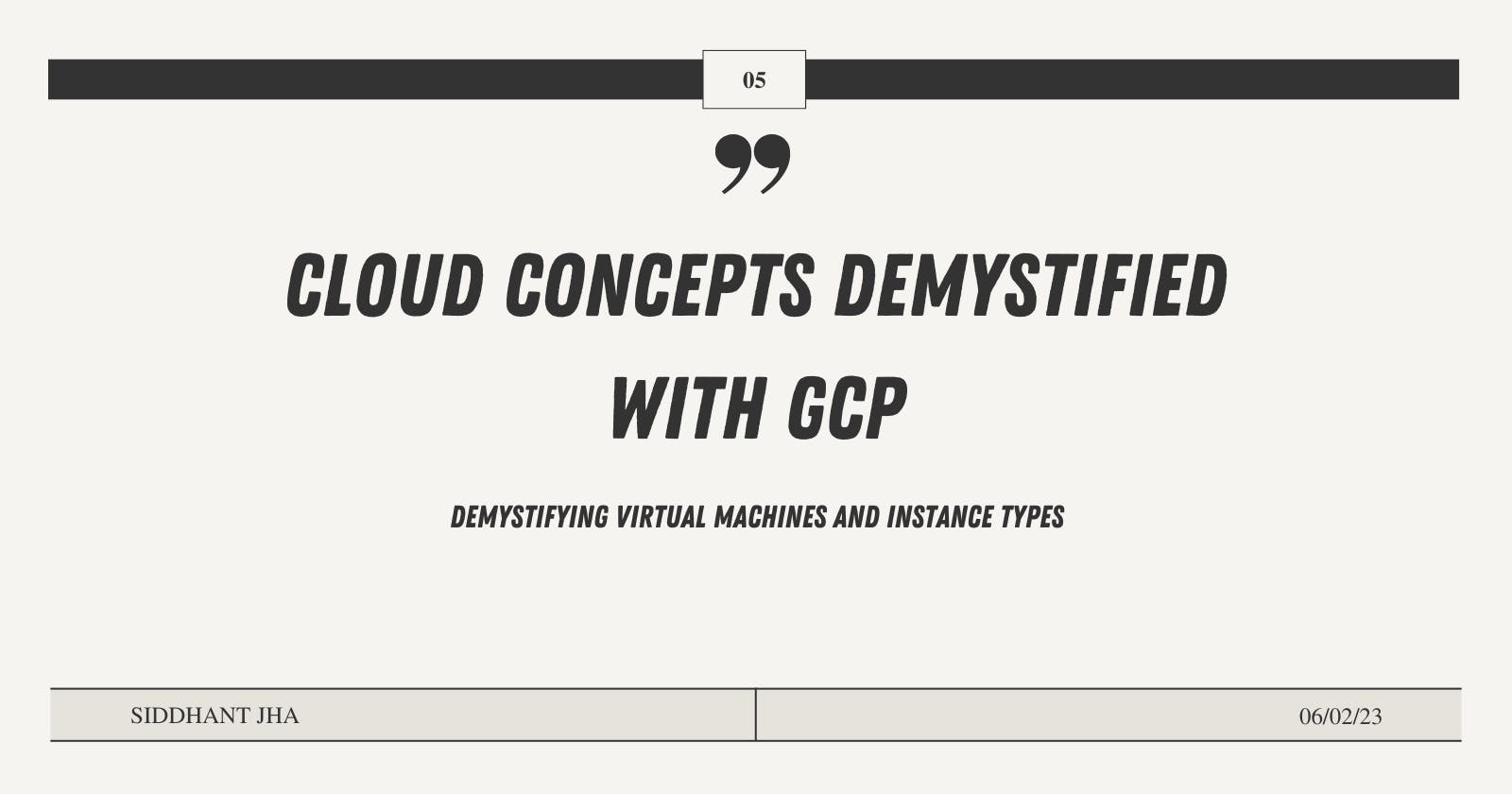Welcome back to our Cloud Concepts Demystified with GCP series! In this article, we will dive into the world of virtual machines (VMs) and instance types in Google Compute Engine (GCE).
So, you've decided to move your workloads to the cloud, but where do you start? Enter virtual machines (VMs) - the virtual building blocks of the cloud. VMs are software-based systems that simulate physical computers, complete with operating systems and applications.
Google Compute Engine (GCE) offers a wide variety of instance types to meet your computing needs. From general-purpose to specialized VMs, GCE has got you covered. In this article, we will discuss the different instance types available in GCE and help you choose the best one for your workloads.
General-Purpose Instance Types:
General-Purpose instance types are designed for a wide range of workloads and are perfect for general computing tasks like web serving, application hosting, and development.
n1-standard-1: This instance type is a balanced VM that is great for most general-purpose workloads. It has a single vCPU and 4 GB of memory. If you're just starting out with GCE, this is a great instance type to choose.
n1-standard-2: This instance type is a step up from the n1-standard-1, with 2 vCPUs and 8 GB of memory. It's perfect for applications that require more CPU and memory resources.
n1-standard-4: This instance type takes things to the next level, with 4 vCPUs and 16 GB of memory. It's great for demanding workloads like database hosting and batch processing.
Memory-Optimized Instance Types
Memory-Optimized instance types are designed for workloads that require high memory and fast access to that memory. Applications like in-memory databases and large-scale analytics are perfect for these instance types.
n1-highmem-2: This instance type has 2 vCPUs and 13 GB of memory. It's a great choice for applications that require a lot of memory, but don't need as much CPU power.
n1-highmem-4: This instance type has 4 vCPUs and 26 GB of memory. It's perfect for applications that need a lot of memory and CPU power, like in-memory databases and large-scale analytics.
CPU-Optimized Instance Types
CPU-Optimized instance types are designed for workloads that require high CPU performance. Applications like video encoding and scientific simulations are perfect for these instance types.
n1-highcpu-2: This instance type has 2 vCPUs and 1.8 GB of memory. It's a great choice for applications that require a lot of CPU power, but don't need as much memory.
n1-highcpu-4: This instance type has 4 vCPUs and 3.6 GB of memory. It's perfect for applications that need a lot of CPU power and a moderate amount of memory, like video encoding and scientific simulations.
Specialized Instance Types
In addition to the general-purpose, memory-optimized, and CPU-optimized instance types, GCE also offers specialized instance types for specific workloads.
GPU instances: If you need to run GPU-accelerated workloads, GCE has you covered with its GPU instances. These instances are equipped with powerful NVIDIA GPUs that can be used for tasks such as machine learning, scientific computing, and gaming. There are two GPU instance types available - n1-standard-1 with 1 vCPU and 1 NVIDIA Tesla K80 GPU, and n1-standard-2 with 2 vCPUs and 1 NVIDIA Tesla K80 GPU.
Local SSD instances: Local SSD instances are perfect for applications that require high disk I/O performance. These instances have fast, local disk storage that provides much higher disk I/O performance than traditional disk storage.
Shared-core instances: Shared-core instances are a cost-effective solution for small, non-resource-intensive workloads. These instances share physical resources with other instances and are ideal for development and testing purposes.
In all seriousness, GCE's virtual machines and instance types provide the flexibility and scalability that businesses need to run their workloads in the cloud. And, with the ability to choose from a wide range of instance types, businesses can select the perfect combination of performance and cost to meet their needs.
So, don't be like the computer with a virus, move your workloads to GCE and experience the power of cloud computing. And, remember, laughter is the best medicine, so be sure to add a good joke or two to your cloud computing journey.

